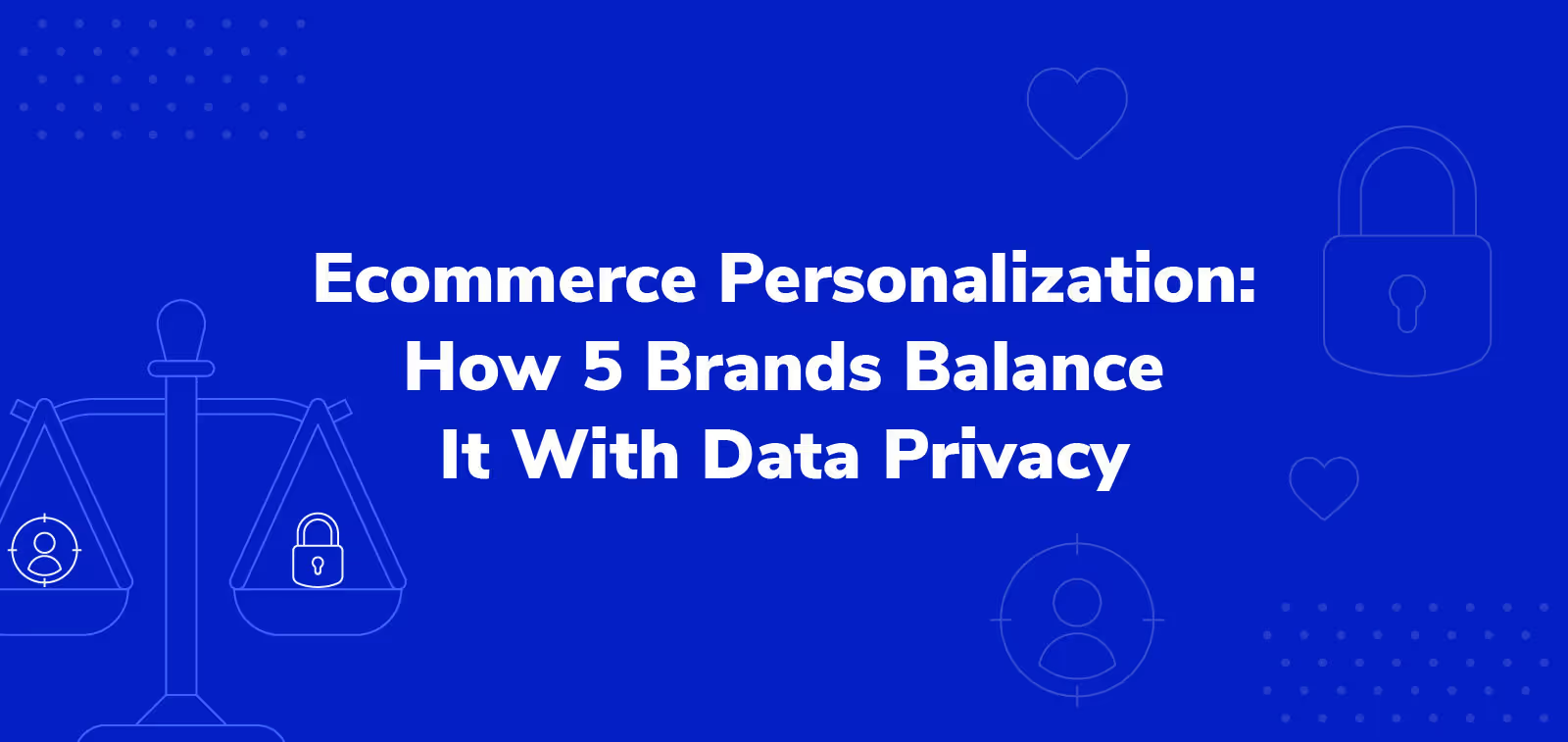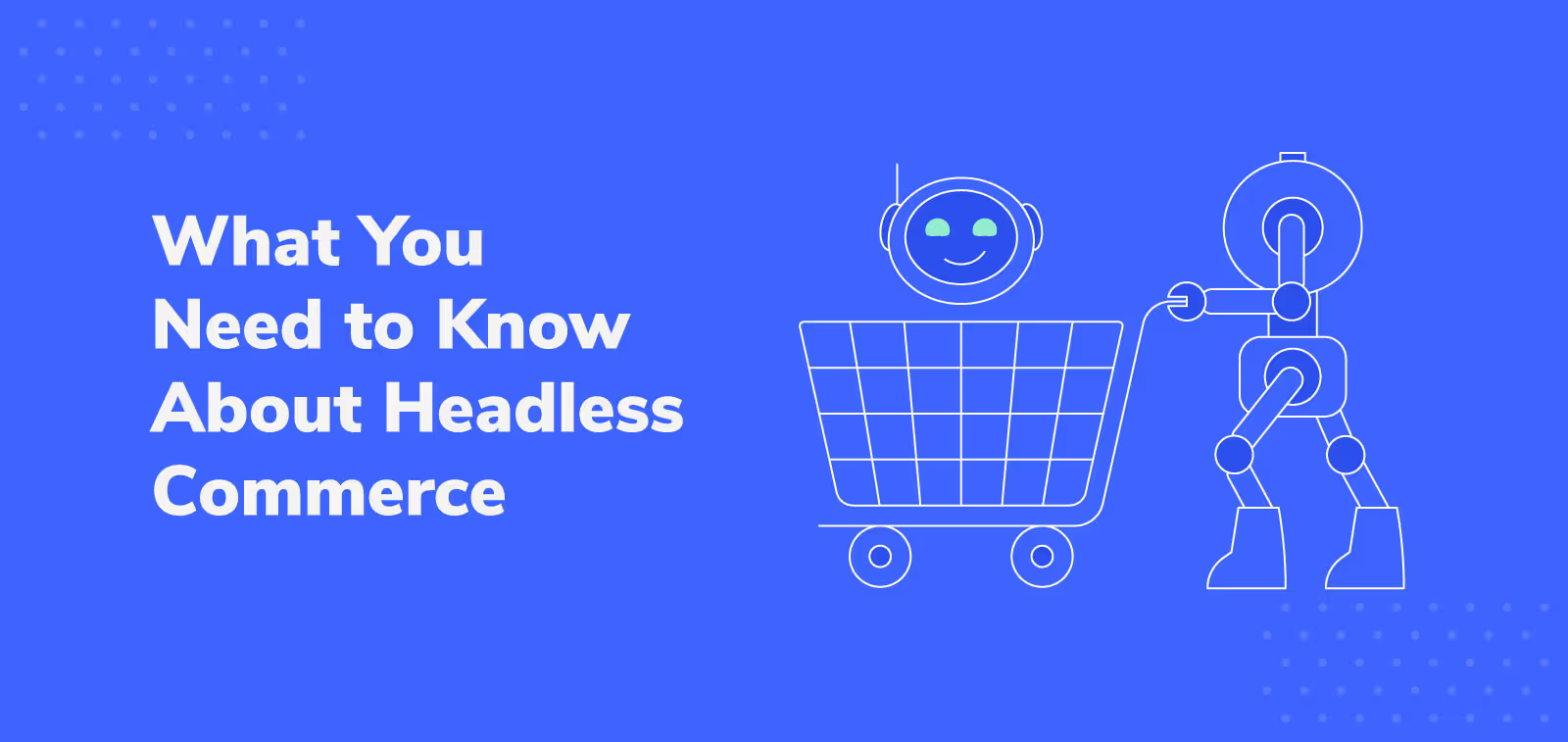How to Increase Conversions in 5 Popular Retail Categories

In England, there’s an expression — horses for courses.
It means there’s not a single best racehorse that will win on any racecourse. Instead, the best way to win a race is to pick the right horse for that particular track.
Ecommerce is the same way. Industry verticals are the racecourses, and the horses are your business practices. The way to success will depend on your target market.
This article identifies three ways ecommerce businesses can achieve success in five popular verticals. While specifics differ, all reflect a user-centric perspective.
1. Exercise and fitness
The pandemic served as a huge boost to the home fitness industry. For example, the sporting goods retailer Decathlon saw a 141% sales growth for workout benches alone between March 2020 and June 2020. And yet, such growth attracts competition. To succeed, fitness ecommerce businesses must adopt tactics that suit distinct groups of customers.
Connect with customers IRL with a pop-up shop
Pop-up shops facilitate online sales with offline experiences. With temporary shops, fitness brands don’t commit to the expense of a permanent store, but customers can test products in person.
The fitness industry is physical. Customers may wonder how heavy 20-lb dumbbells feel in their hands or if they're flexible enough for a rowing machine. Pop-up stores let customers try products, see if they're suitable, and purchase confidently. Plus, it's a good time for pop-up stores: commercial rents are low as potential tenants shift to remote working.
Launching a pop-up store is similar to planning an event — you want to make it something people won’t want to miss. Spread the hype through word of mouth, email, social media, and digital advertising. You can also connect with high-profile influencers to lead on-site fitness classes and create excitement.
Pop-up stores keep things mobile, moving from place to place with temporary stores. Your social media team can create buzz before you arrive at each new location — especially those areas with a lot of closed stores. Any influencers you’ve partnered with may be able to lend a hand, too.
One example is Gymshark, a popular fitness apparel brand, which expanded from digital to physical by conducting international tours. Shoppers and fitness enthusiasts from around the world met Gymshark athletes and bought their goods at special pop-up events.
Experiment with bundling
Bundling is when you sell a set of items as a package. Experiment with combining individual products into different bundles focused on specific exercise and fitness goals to increase sales and revenue.
Bundling works for fitness businesses because a healthy lifestyle often involves different products. Fitness regimens commonly require various pieces of exercise equipment, activewear, water bottles, shakers, and supplements.
Your Super used solutions-oriented bundles to hit $70 million in revenue in 2020. Their process involves asking visitors to the site what their fitness goals are, whether that’s to support their fitness and boost their protein intake, reduce stress, or balance hormones. After responding to the questions, shoppers are presented with a suggested bundle based on their goals.
Your fitness brand can follow a similar strategy. Use a market research tool like Attest to understand your customers’ goals. Then identify product compatibility based on the intentions of each group. For example, aspiring runners might like a bundle with high-performance running shoes, a phone armband, and a hydration pack.
Analyze and segment customer journeys
In retail, you can’t afford to make assumptions about customer paths to purchase. Instead, use data to create distinct customer journeys for a variety of fitness enthusiasts with different goals, abilities, and budgets.
Expensive gear and at-home gym equipment can be a big commitment. Shoppers may visit your site many times before committing to a purchase, and there may be different pain points holding them back. Analyzing traffic lets you create distinct buyer paths with customized messages at each stage.
Different types of customers may not actually want different products, but here’s where messaging is key. For example, treadmills can appeal to 20-something men in Arizona or baby boomer women in Scotland. However, each may respond better to different messaging. Proper analysis helps you identify and capitalize on what works.
Use tools like Contentsquare to segment traffic into different types with real data. Then use an email marketing platform like Campaign Monitor to pull the data from your website and automate the emails. Set actions that trigger based on particular behaviors. If a customer frequently visits the same product page, offer a discount, for example.
2. Furniture
Statista projects US furniture ecommerce revenue will rise from $149 billion in 2022 to $208 billion in 2025. To secure a slice of this growth, minimize friction points associated with often high-value and physically large products.
Involve customers with interactive tools
Use interactive tools to involve customers in the creative process and build an emotional connection. Such tools can also move the sales process along more smoothly.
Clothes are easy to order, try on, and return. Testing a new look for a room — complete with alternate furniture — is harder. But consumers need to get a feel for how the furniture would fit in their home before committing. Digital tools like immersive augmented reality apps, virtual reality goggles, and interactive design experiences help customers visualize products without shipping or assembly.
For example, IKEA’s Build your own Desk Planner lets customers combine different legs and surfaces without purchasing and assembling them. More famously, the IKEA Place app uses augmented reality (AR) to show what that custom furniture might look like in specific rooms.
Such tools improve the customer experience, adding a fun element and inspiring confidence that they’re picking the right piece of furniture. Plus, a customized product that meets their exact needs is less likely to be returned, which saves time and effort on assembly/installation.
Try software like Threekit or ATLATL to offer experiences similar to IKEA’s.
Secure cash-strapped customers with BNPL
Quality furniture can often cost more than shoppers have on hand. Rather than losing out on the sale, let customers spread the cost of purchases with BNPL (buy now, pay later).
A sofa built to last can cost upward of $1,000, while the last census put the median US monthly income at around $5,500. Spending a fifth or more of your paycheck on a single product is not an option for many. But low cash flow shouldn’t be a barrier to purchase. BNPL services let customers spread costs with structured payment plans, making the financial impact less dramatic.
As well as being suited for high-end furniture brands, BNPL works for companies catering to lower-income shoppers who struggle with large purchases. For example, Walmart offers BNPL via Affirm.

These BNPL services — including Affirm alternatives like Sezzle, or Afterpay — are quick and easy to integrate with most ecommerce platforms.
Offer expert assembly
Offer expert assembly for customers unable or unwilling to assemble furniture themselves. Expert assembly expands the pool of potential customers, and it lets them buy with confidence.
While expert assembly is just an added convenience for some, it’s essential for others, making it an inclusive step toward driving more conversions in the furniture industry. For customers who live alone, expert assembly helps with furniture that needs two or more people to assemble. The elderly and disabled or customers with reduced physical abilities may also struggle without help. People may hesitate to purchase if they don’t think they can assemble the product on their own.

Offering expert assembly may be easier than you think, as there’s no need to train or employ your own experts. For example, Wayfair offers assembly via Handy.
3. Electronics
Excluding groceries, the category with the biggest year-on-year search growth for online shopping post-Covid was electronics (41.4%). With some minor CRO (conversion rate optimization), you can increase your chances of tapping into this growth.
Ensure recommended items aren’t duplicate items
Use data-driven recommendation tools, so you only suggest items that customers are likely to purchase.
In some verticals — like fashion or beauty — customers repeatedly buy the same product (e.g., face scrub or moisturizer) because the product wears out or they use it up quickly. In electronics, this is less common; few people need multiple high-end gaming PCs.
To avoid wasted opportunities like recommending a laptop purchase to customers who just bought a computer, use smart cross-selling tools. Leverage customer data to recommend products with a tool like Insider.
Set up Insider or similar cross-selling tools so customers with histories of buying specific products aren’t shown duplicates. Identify high-value products that customers are unlikely to repurchase soon (a desktop PC, for example). Then specify a period that must expire before a customer will be recommended the same type of item.
If you don’t do this already, prioritize items complementary to recent purchases. For example, a customer with a new laptop may want a USB mouse, keyboard, or headphones.
Make social proof prominent
Some online marketplaces have an unfortunate reputation for low-quality electronics. So it’s understandable if some consumers hesitate to buy electronics online. You can combat this by leveraging social proof to build trust with customers.
While shoppers may fear low-quality knock-offs, social proof shows that people like them purchased without regret. Social proof is also ideal for the electronics vertical because electronics are used to create and view it.
For example, Apple’s Shot on iPhone challenge lets users demonstrate the quality of their cameras with the #ShotoniPhone hashtag. Other businesses can emulate this approach by incentivizing participation in challenges with prizes.

However, people who haven’t seen your social media campaign won’t benefit from it unless they’re shown social proof at checkout. Feature user-created content prominently with social media aggregator tools like Taggbox or Flockler. Such tools let merchants embed social feeds in specific locations on their sites. Just remember to prominently feature the hashtag associated with your social media challenge.
Enable intra-category search
Enable intra-category search to help customers efficiently find the right product. If the search experience is frustrating, customers might look elsewhere — suppressing potential conversions.
Customers can struggle to find compatible hardware with website search features. Say a customer looking for a Dell laptop adapter on Walmart’s mobile site searches the batteries and adapters category. The site displays every adapter. The user then returns to the search bar and types “Dell.” The site then shows all Dell products, not just batteries and adapters.

In this scenario, the customer assumed the search would only present items from the currently selected category. This seems reasonable because their category selection reflects their intention. Baymard’s user testing shows 50% of shoppers try to “search within” despite 94% of mobile sites not supporting it.
Often, the simplest solution is to implement autocomplete in the search bar with suggested results and categories highlighted. Seventy-four percent of sites already have an autocomplete solution they can use for this.

Ask your lead web developer about implementing intra-category search with your tech stack. Show what you’re aiming for with these examples.
4. Beauty and Personal Care
Statista Digital Market Outlook projects that after an explosive year-on-year growth rate of 30.8% in 2021, growth in beauty and personal care ecommerce will plummet to 10.4% in 2022, steadily declining from there. Less market growth will mean merchants will have to fight over the existing market. That means for a beauty and personal care merchant to succeed, they must engage with customers in ways the customers prefer.
Set up automated abandoned cart emails to remind customers of products they’re interested in
Beauty and personal care is a vertical that thrives on impulse buying. But perhaps unsurprisingly, psychology research shows that impulse buyers can get distracted and abandon their carts before converting. However, automated abandoned cart emails can remind customers about products they’ve viewed and remotivate them to complete their purchase.
The latest global data is for 2020 and places the rate of cart abandonment at 69.8%. However, cart abandonment can never be totally eliminated. As Baymard data shows, an average of 58.6% of shoppers are “just browsing” or “not ready to buy.” No amount of CRO (conversion rate optimization) at checkout can fix that. Simply put, if you’re not ready, you’re not ready.
Still, don't give up on “not ready” shoppers. They’ve shown interest in your products, making them good prospects. They need periodic reminders of products they’ve viewed — especially when they’re on sale — using data-driven reminder emails.
Tools like Campaign Monitor use browsing data and demographic information to create and send personalized reminder emails.
Personalization is important, as 42% of UK/US customers expect to be served personalized content. Campaign Monitor’s own data indicates that personalized emails have up to a 2.5x better CTR (click-through rate). With such an improvement, it’s likely you can turn some abandoned carts into sales.
Put social commerce first with social media shops
Embrace the trend toward omnichannel social commerce with social media shops.
Data from Statista reveals that beauty and personal care was the second most shopped category on American social media in 2021. Fifteen percent of all items purchased belonged to this category.
Leverage the social media sales potential of beauty and personal care; sell directly on social with native shops. Instead of making customers click through, let them buy on their preferred platform. Instagram and Facebook shops allow you to monetize your social presence and drive conversions from right within the apps themselves.
Build influencer marketing into your website
The beauty products market is huge, with a low barrier to entry due to the cost of products and ease of distribution. It can be hard for consumers to know who to trust. Businesses must address such lack of trust, and one way to do so is to bring their influencer marketing efforts directly onto their main site to help build trust.
TrustedSite data shows 50% of shoppers had abandoned carts because they were worried about the trustworthiness of the business. A NuData Security study also showed that 57% of consumers who shop online more frequently today than they did at the start of the pandemic are now more concerned about security.
The aesthetic focus of beauty products is perfect for influencer marketing. Consumers can see their value in pictures online and feel motivated to recreate the looks created by influencers.
Use influencer marketing on your site to leverage familiar faces. Influencer marketing builds trust, just like word of mouth. According to Linqia, 71% of enterprises already doing influencer marketing planned to increase their budget in 2021.
Show influencers using your goods on product and landing pages to increase trust and bring the customer closer to checkout. (But make sure the terms you agree to detail any special or additional costs that might be involved with such use of influencer content.) The Salsify 2021 Consumer Research Report indicates that 86% of shoppers are willing to pay more for products from brands they trust.
5. Outdoor and Recreation
Sports and outdoor ecommerce is growing fast. In the UK alone, it grew £774 million from 2018 to 2021, and Statista projects it will hit £3,572 million by 2025. To secure your share, ensure your marketing reflects an exciting and strenuous outdoor lifestyle.
Display video prominently
The outdoors is a place of activity, but static product photos paired with explainer text don’t always reflect that. Splash video across landing and product pages showing products in action to engage shoppers.
Brightcove’s latest whitepaper on video in ecommerce shows that 45% of UK, US, and Australian consumers find videos more engaging than other content. Google’s data indicates that 55% of consumers use video to decide purchases.
Consider GoPro, which has a unique position to showcase both outdoor products in use as well as the capabilities of their durable action cameras. They know that a photo of a pair of skis is illustrative, but a beautiful video of an athlete flying down a perfectly combed run is inspiring.
GoPro makes great use of video for the HERO10 Black. A video positioned early on the product page shows the outdoor camera in active use in adventurous settings accompanied by exciting music.
Engage with past customers to create social media advocates
Use social listening tools to encourage happy customers to become advocates.
Nielsen found that 88% of respondents trust recommendations most from people they know. When users discuss your products online, your social media team can use social listening tools to track and highlight recommendations.
First, engage customers on social media with questions that will lead to positive answers, as Jenson USA does in the example below.

https://www.instagram.com/p/CZshOOkPLNt/
Then use social media listening tools like Miappi or Sprout Social to discover users talking about your company and its products. Once you’ve found them:
- Give shoutouts to positive contributors.
- Follow back users who follow your accounts.
- Like and share their content.
- Offer swag/discounts — or even handwritten letters of thanks — to potential advocates.
With brand advocacy, you can create emotionally positive marketing that builds trust on a very low budget.
Offer modern product protection
The final strategy for driving more conversions in the outdoor and recreation vertical is broadly applicable to all verticals — including those that aren’t listed in this article.
Outdoor and recreation products can experience a lot of wear and tear, and customers know this. Offer modern product protection to show customers that you stand by your product, and if a product experiences a covered failure or accidental damage, they can file a hassle-free claim for a repair or replacement.
Product protection isn't just a great choice for outdoors products — it builds loyalty across all of the above verticals. Product protection demonstrates a merchant’s commitment to its products, up-levels the customer experience, and increases brand loyalty.
Get a firsthand look at how product protection can help your business drive more conversions. Book a demo now to see how Extend can work for you.
Aaron Sullivan is senior content marketing manager at Extend. He specializes in writing about e-commerce, finance, entertainment, and beer.
.svg)












































.avif)











